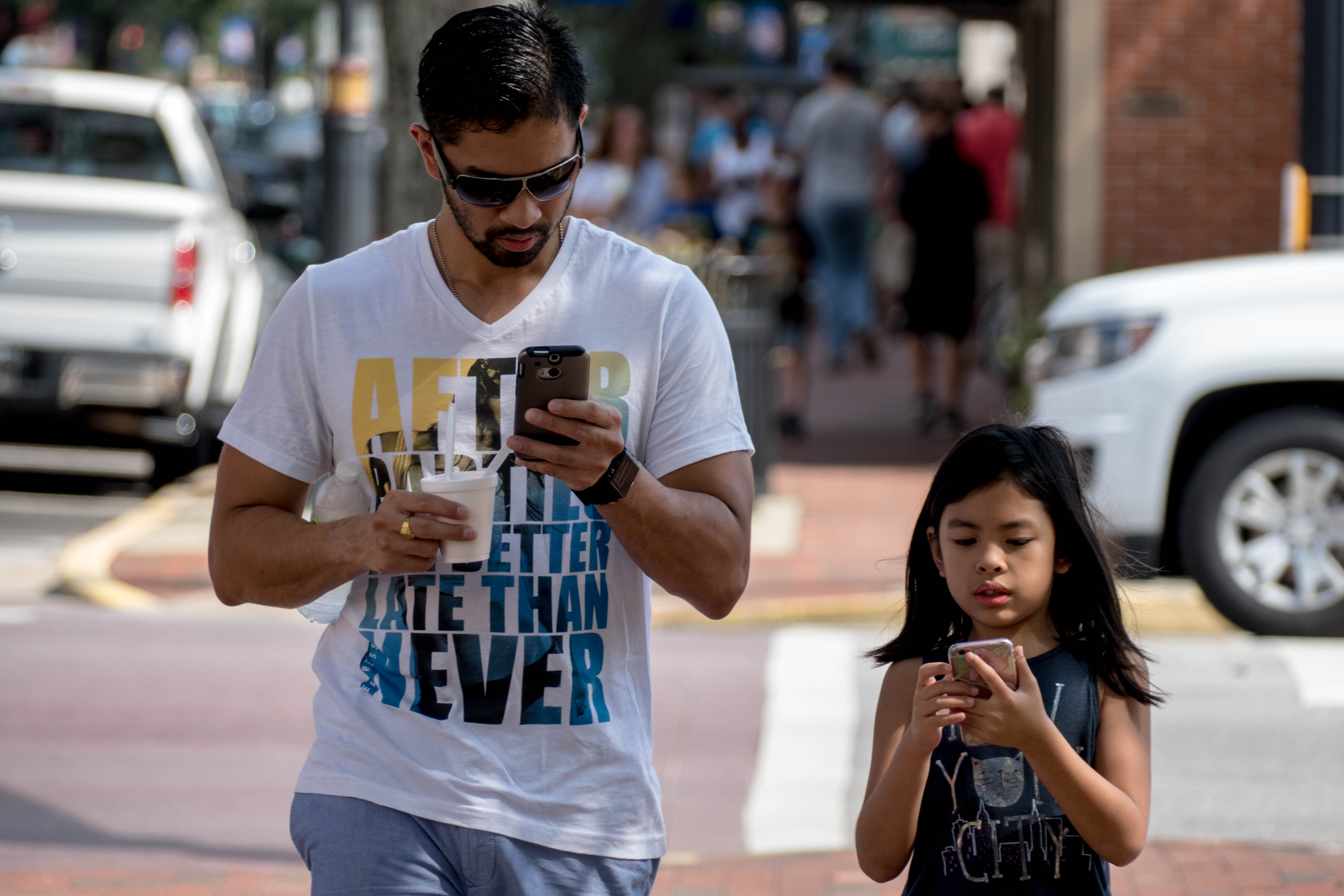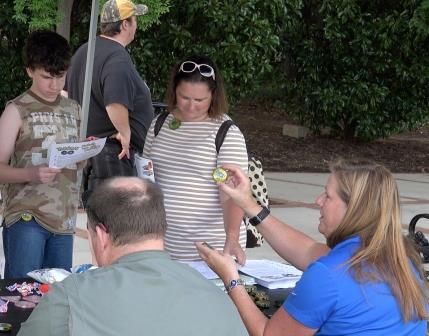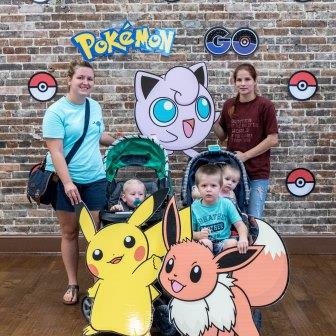They seemed to be everywhere this summer: People wandering around parks, museums and downtowns holding up their cell phones as they walked. They were trying to capture the magical creatures known as Pokémon.

Children and adults took part of the craze/City of Sumter.
In Pokémon Go, a location-based augmented reality game, players use a mobile device’s GPS to locate, capture, battle and train virtual creatures which appear on the screen as if you could touch them. But Pokémon Go players weren’t only interested in catching Pidgey or Pikachu. Turns out, these players were stopping in downtown stores, dining in restaurants, enjoying neighborhood parks and learning more about the cities they were visiting.
And some cities were quick to tap into the game that took the world by storm this summer.
In Greer, foot traffic increased dramatically in the city park when the Pokémon Go craze hit in July. The city saw the phenomenon as a way to highlight Greer and support local businesses.
There were nearly two dozen Pokéstops within a quarter-mile radius of the park along with four "gyms," which are locations where players can battle the Pokémon of rival teams or train their own Pokémon.
"It was a perfect draw not only to the park offerings but also to the businesses in Greer Station," said Steve Owens, communications manager for the city of Greer. "The game and the city’s offerings meshed perfectly."
Greer moved its National Night Out celebration from neighborhoods to Greer City Park and made Pokémon Go a part of it. In addition to games, displays and refreshments, the city placed lures—game modules that attract Pokémon to a Pokéstop for 30 minutes—at Pokéstops in the park. While Pokémon players place most lures, businesses and cities also use them to attract players and potential customers to a location.

The City of Greer’s Building Official Ruthie Helms and Codes Enforcement
Officer Tor Ellstrom provided safety tips and reflectors/City of Greer.
The city also used the free event to educate adults and children about the game’s potential dangers and distributed free lighted safety reflectors to keep players safe in the dark.
"The turnout for National Night Out exceeded all expectations. We ran out of giveaway items and kept a steady stream of traffic at booths and displays all evening, thanks, in part, to a $15 investment in Pokémon Go," said Owens.
The amount represents how much the city spent on lures which were purchased through the game.
The Pokémon safety tips cost the city nothing except for minor copying costs, while branded lighted reflectors cost less than $1 each and were given out to visitors as freebies.
The game also has helped introduce families to food, entertainment and recreation offerings in Greer Station, the central business district adjacent to the park.
Kyle Mensing, commercial development director of the Greer Development Corp., said after a little investigation, he learned how easy it was to access Pokémon Go. His office made a Google map listing of the Pokémon "gyms" and stops, while educating Greer business owners and event planners about the game.
Sumter is another city that went all-in on the Pokémon Go trend, sponsoring a downtown Lure-A-Thon to attract people to the large concentration of PokéStops in the business district.

Pokémon Go drew visitors to downtown Sumter/City of Sumter.
"Downtown has undergone many revitalization projects within the last 10 years, and our goal is to bring people down here to enjoy the new terraces, green spaces, restaurants and retail stores. Hosting a Pokémon Go Lure-A-Thon seemed like a great way to achieve that goal," said Chelsea Nations, Sumter’s community improvement specialist.
Before the Lure-A-Thon, the city contacted two local businesses about running Pokémon specials. One offered 99-cent ice cream sundaes and another sold $1 hotdogs and half-priced beer.
"The restaurants were packed all day. We had about 2,000 people at the Lure-A-Thon, many who hadn’t been downtown in years. It was a great day for businesses. You can’t beat foot traffic like that," Nations said.
She attributes the success to the game being easily accessible and the city’s decision to strike while the game was hot.
"We knew the craze wouldn’t last forever, so we planned the event in just a few weeks," Nations said. "We didn’t spend any money on advertising. We hit social media and hit the streets passing out flyers. We wanted to attract a diverse crowd, so we tried to have something for everyone: face painting, a photo booth, a gaming merchandise table, Sprint phone charging station, Italian Ice, food specials and half-priced beer."
Another Lure-a-Thon was planned in Sumter soon after the July event.
"The best lesson we learned was an awesome one—that people are hungry for these types of family-friendly events, and they will show up. It was a wonderful day. People were helping each other, laughing and discovering the beauty of downtown Sumter," she said. "Watching 2,000 strangers come together to hunt and catch mythical creatures in an augmented-reality game is something I’ll never forget."
And while the number of Pokémon hunters may have dropped a bit, cities should keep watching for the next big thing.
"The lesson to take away is that the augmented-reality trend will continue to grow, and there is an opportunity for municipalities to capitalize on it," Mensing said. "I wouldn’t be surprised if the trend continues. It may not be Pokémon Go, but there will be another one to take its place."
